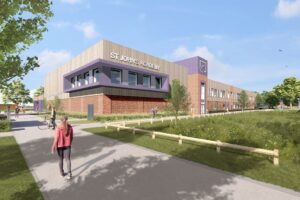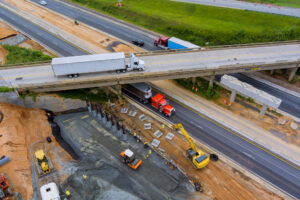Economic Benefits Of Choosing Fabric Buildings For Your Business

Portable Warehouse Building Structure for Temporary Storage
Today’s entrepreneurs are always on the hunt for cost-effective solutions that don’t compromise on quality. They understand that every penny counts, especially when it comes to buildings and infrastructures.
But did you know there’s a clever and economical solution?
Enter fabric buildings—a game-changer for businesses looking to save without skimping on durability. Let’s dive into what these are and the compelling reasons why your business should consider them.
What Exactly Are Fabric Buildings?
Fabric buildings, also known as tension fabric structures, consist of a robust steel frame covered by specially engineered fabric materials. Unlike traditional brick-and-mortar structures, these buildings are designed for both temporary and permanent purposes. The material allows flexibility, but don’t mistake it for fragility. These structures are sturdy and built to last.
 A Cost-Effective Option For Modern Businesses
A Cost-Effective Option For Modern Businesses
Now that we’ve touched on the basics of fabric buildings, you might be wondering if you should consider them for your business. Tension fabric structures don’t just use innovative materials or feature modern aesthetics, as their true charm lies in their economic advantages.
Whether you’re a startup trying to maximize every dollar or an established business looking to optimize your ROI, the benefits can significantly impact your bottom line.
Let’s explore these benefits further:
- Cost-Efficient Construction
Fabric buildings are simple and quicker to install compared to traditional buildings. They don’t need costly concrete foundations since they can be anchored directly to existing ground. The frame and fabric are all you need, meaning fewer materials and labor hours.
As fabric buildings have a less permanent nature, some jurisdictions may have a more lenient permit process. This can save both time and money on administrative front ends.
With all these factors in play, it’s no wonder businesses can optimize their construction budget when opting for fabric structures.
- Lower Maintenance Expenses
Minimal upkeep is another advantage of fabric structures. The unique fabric is designed to resist UV rays, rain, and snow damage. This translates to fewer repairs resulting from weather-related wear and tear. Besides extreme weather, fabric buildings are also pest-free, so your business can spend less on pest control and related maintenance.
The fabric cover also protects the underlying structure from direct exposure to moisture and other corrosive elements. Engineered fabric buildings are especially beneficial if you’re building in a more humid or seaside environment, as they prevent rust and corrosion.
Keeping them clean requires no more than occasional washing to remove dust and dirt. In case of damage, all you need is to replace the section of the fabric. There’s no need for paint jobs, sealing, or costly repairs associated with traditional buildings.
- Energy Savings
The inherent design and material of fabric buildings contribute to noticeable energy savings. The translucent fabric can provide natural lighting during the day, reducing the need for artificial lighting. This means a decrease in energy consumption and, consequently, your electric bill.
Fabric buildings also offer insulation that matches or even surpasses traditional structures. During colder months, they can retain warmth, reducing the need for extensive heating systems. In warmer months, the fabric can reflect sunlight and prevent excessive heat buildup, decreasing the dependency on air conditioning.
The flexible design of fabric structures means that you can easily integrate natural ventilation systems. This can further reduce the need for powered ventilation and cooling solutions.
Businesses can anticipate lower utility bills and a more sustainable operational model when opting for fabric buildings.
- Flexibility And Scalability
One of the standout advantages of fabric buildings is their unparalleled adaptability to suit evolving business needs. Their design inherently provides flexibility that traditional structures can’t match.
Your workspace may need adjustments as your business grows. Fabric structures can be easily reconfigured to accommodate your current needs. You can even add sections without any massive disruptions to your ongoing operations.
Are you planning to change your business location or move to a seasonal hotspot? Some fabric buildings can be disassembled and reassembled at a new site. Such mobility spares you from the financial burden and time constraints of building afresh or leasing new spaces.
Furthermore, fabric buildings can be set up on various grounds, be it concrete, asphalt, or gravel. This means you don’t need a prepared site, which offers you a more excellent choice in location and on-site preparation.
These dynamic features ensure that fabric buildings can pivot with your business’s changing circumstances, making them a financially and operationally sound choice.
- Eco-Friendly
Fabric structures also offer green advantages over traditional structures. Initial construction consumes fewer resources in terms of materials and energy. The streamlined manufacturing process of these structures means less waste. Lightweight components also mean fewer transportation emissions when shipping to the building site.
At the end of their lifecycle, many parts of the fabric buildings can be recycled. Depending on its composition, the fabric can be recycled, while the steel or aluminum frames can be repurposed.
Opting for fabric buildings is a financially savvy choice and one way for businesses to lower their carbon footprint and promote the planet’s well-being.
Final Thoughts
When you want to make a sound business decision, remember that it’s not about the money you spend but the money you save. Fabric buildings offer an opportunity to cut costs while securing a sturdy and reliable space for your business endeavors. It’s a win-win that’s hard to ignore.
So, when considering your next business expansion or startup location, think of fabric. Your wallet and business will thank you for it.






